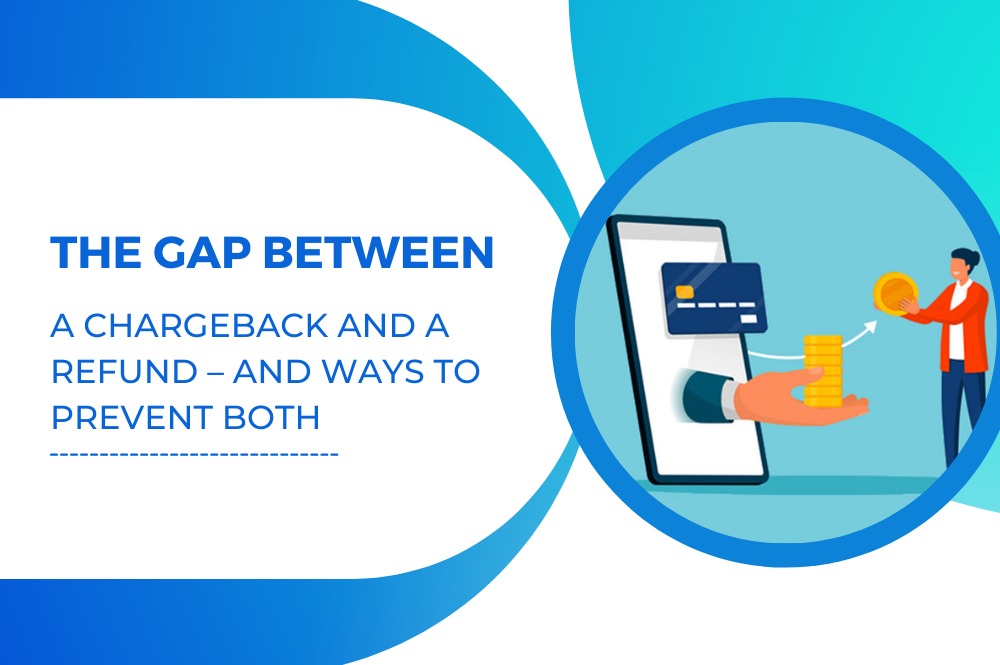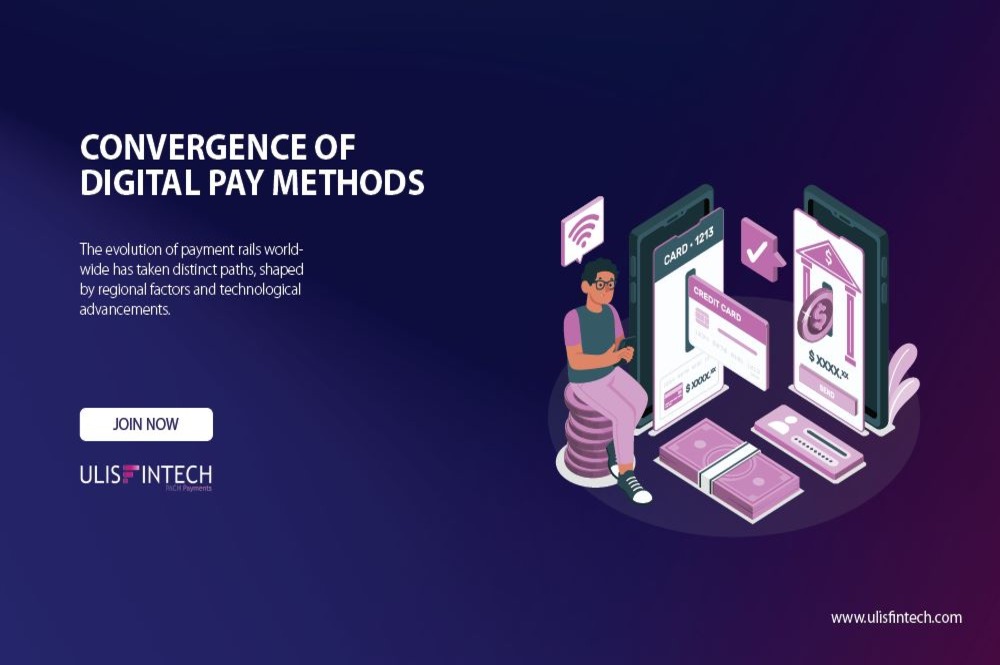The gap between a Chargeback and a Refund
Mar 24, 2022 - 11 MINS READ

The gap between a chargeback and a refund – and ways to prevent both
Chargeback and refund are two phrases that are frequently used interchangeably in the retail industry to describe instances in which disgruntled consumers wish to reverse purchases and receive their money back.
As a merchant, you lose the sale either way, which is why these words are frequently misunderstood. Although chargebacks and refunds have many similarities, they also have significant distinctions. As a retailer, it's critical that you understand the difference between a chargeback and a refund - and what actions you can take to limit their occurrence.
The primary distinction between a chargeback and a refund is who initiates it. In the event of a refund, the merchant returns the money to the consumer immediately following the return or exchange of a product or the report of disappointment with a service. The customer receives credit from his or her card issuer for chargebacks. This usually includes some sort of disagreement or fraudulent conduct relating to the original transaction, and it may result in additional fees for the business.
"Dual Refunds"
When a customer has a problem with a transaction, they may contact both you and the bank. If a consumer files a chargeback, you won't hear about it right away. That implies you can offer a refund even if the chargeback procedure is already started.
In this case, you should be able to contest the chargeback and recoup part of your earnings. Even if you do, you'll still lose the administrative fees, and another chargeback will be applied to your ratio.
It's feasible that this scenario will emerge spontaneously. It's possible that the cardholder just phoned you and the bank for help since they didn't grasp the chargeback vs. refund distinction. Often, the offender is a con artist aiming to "double-dip" and earn double the return. This takes us to another point in the chargebacks vs. refunds debate: friendly fraud.
The operation of retail refunds
Most of us have heard of refunds, which are returns initiated by the client and agreed upon by the merchant.
A client may request a refund for a variety of reasons, including:
- Goods that are damaged
- Poor caliber
- Incorrect merchandise
- Delivery was delayed.
It is up to you, as the merchant, to determine whether or not to reject the customer's justification. If you agree, it's merely a question of crediting or returning the money to that user's account.
Working of retail chargebacks
Chargebacks, like refunds, are initiated by consumers. Customers challenge charges through their card-issuing bank rather than contacting you directly. The bank then credits the accounts of the users before returning to you, the business.
Chargebacks, like conventional refunds, can be initiated for a variety of legitimate reasons, such as damaged, late, or poor-quality items. Another typical triggering event is when clients do not identify specific charges on their credit card accounts.
For example, your company's name may be Acme Store. TAS, Ltd., on the other hand, might be the payment descriptor associated with your merchant account (i.e., The Acme Store, Limited). Customers who did not establish the link may wind up fighting those specific charges.
Worse, they may claim to be unaware of the transaction. This is a regular occurrence in what is known as "friendly fraud."
- In reality, 86 percent of all chargebacks are likely examples of "friendly fraud" — consumers who purchase things with the goal of challenging the charges later.
- Regrettably, consumer protection regulations make this all too simple. Customers can start a chargeback by calling their banks or clicking the "dispute" button connected with their online accounts. This sort of fraud is particularly prevalent online, as eCommerce businesses execute card-not-present (CNP) payments from anonymous customers.
- Chargeback fraud, sometimes known as "cyber shoplifting," is significantly more expensive than reimbursements. You lose not just the original purchase price, but also the goods sold and any fines or penalties paid.
- You must deal with weeks (if not months) of back-and-forth with the customer's card-issuing bank, as it is your responsibility to establish that the transaction was valid.
Though merchants do not typically have a good track record with chargeback disputes, there is a chance of winning; however, when considering the amount of time invested, the best defense against chargebacks (and refunds) is to prevent them from occurring in the first place using a two-pronged approach:
- One that deals with valid refunds
- one that deals with cases of fraud
Decrease legitimate chargebacks and reimbursements
Here are some pointers to assist you to lower the frequency of genuine returns in your store:
- Only offer high-quality goods and services. The higher the quality of your goods, the fewer angry clients you will experience.
- This enhances your capacity to identify possible complaints before they have a detrimental impact on your bottom line.
- Request a merchant description that appropriately portrays your brand from your payment processor. Customers should notice this on their monthly accounts if your company is called "Acme Store."
- Invest in a dependable delivery service to ensure that ordered things reach in good condition and on schedule.
Limit the number of illegitimate chargebacks and refunds
Several solutions are provided below to assist in reducing the quantity of "friendly fraud" that enters your payment environment:
- Turn off guest checkout. Requiring users to log in can assist in tracing purchases back to them.
- After a consumer has made a purchase, send them a complimentary gift or a discount. Any user who later claims these freebies will have a more difficult time claiming that the original purchase was unintentional or unapproved.
- Request extra verification information throughout the checkout process. In addition to credit card numbers and expiration dates, you should seek three-digit card verification values (CVVs) from the backs of their cards or four-digit card identification numbers (CIDs) from the fronts of cards such as American Express. You can use an address verification system (AVS) to compare the user's billing address to what the card-issuing bank has on file.
- Use fraud prevention filters that will automatically detect purchases made using suspect cards from untrustworthy locations.
One more piece of advice for reducing fraud
People will always try to cheat the system as long as you are open for business. Although the methods described above may dissuade some crooks, there is no way to totally eradicate chargebacks and refunds.
However, there will be honest customers who are either unaware of or hesitant to use your store's return policy. You can't really blame them given how simple it is to launch a chargeback. Make your return policy as simple and clear as possible. The less friction there is, the better.
When it comes to chargebacks vs. refunds, there is no doubt about which is more destructive. A refund is nearly usually faster, simpler, and less expensive than dealing with a chargeback. If chargebacks continue to be an issue, you may wish to seek expert assistance. Customers who are dissatisfied will receive a refund regardless of the circumstances. As a result, it's to your best advantage to direct customers to your well-publicized and hassle-free refund policy rather than the considerably more expensive and time-consuming chargeback alternative.
Endnote
Both refunds and chargebacks are initiated by the cardholder and both result in a loss of funds. The primary distinction between a chargeback and a refund is who initiates it. Chargebacks incur additional expenses for the merchant and raise the chargeback ratio. Chargeback costs are often higher in high-risk sectors. All of this appears to be very basic, yet the trade is not really a quid pro quo. Certain incidental costs apply to returns that you may not be aware of. The cost of return shipping is significant, and there are fees for restocking items (if it is in resalable condition). If the item is faulty or damaged, you may be required to mail it back to the distributor or just eat the cost of the item.







